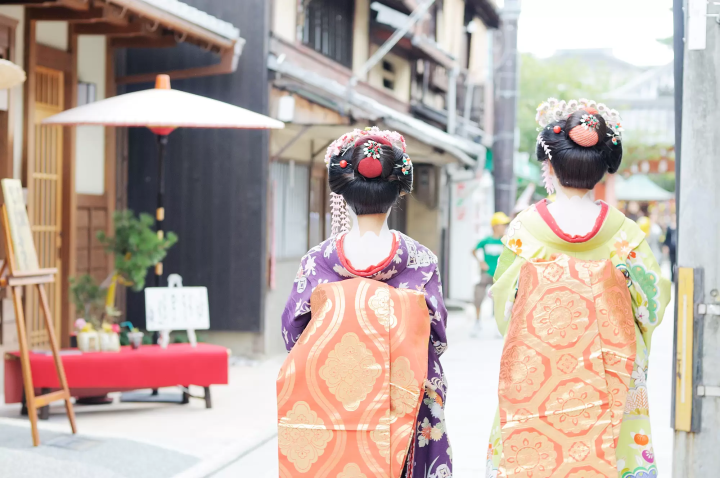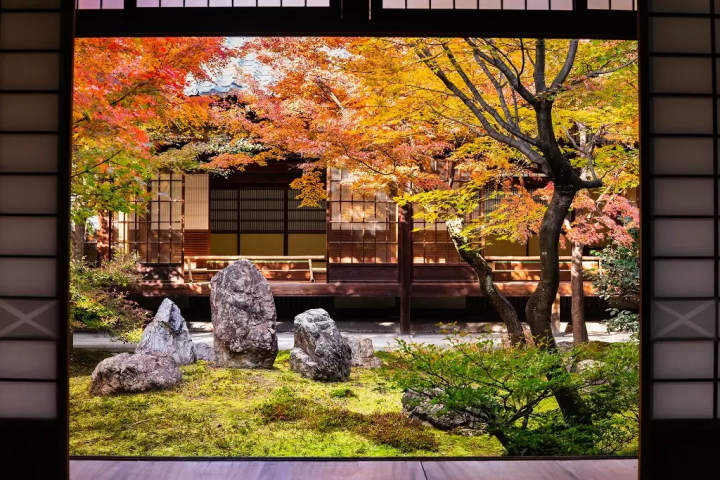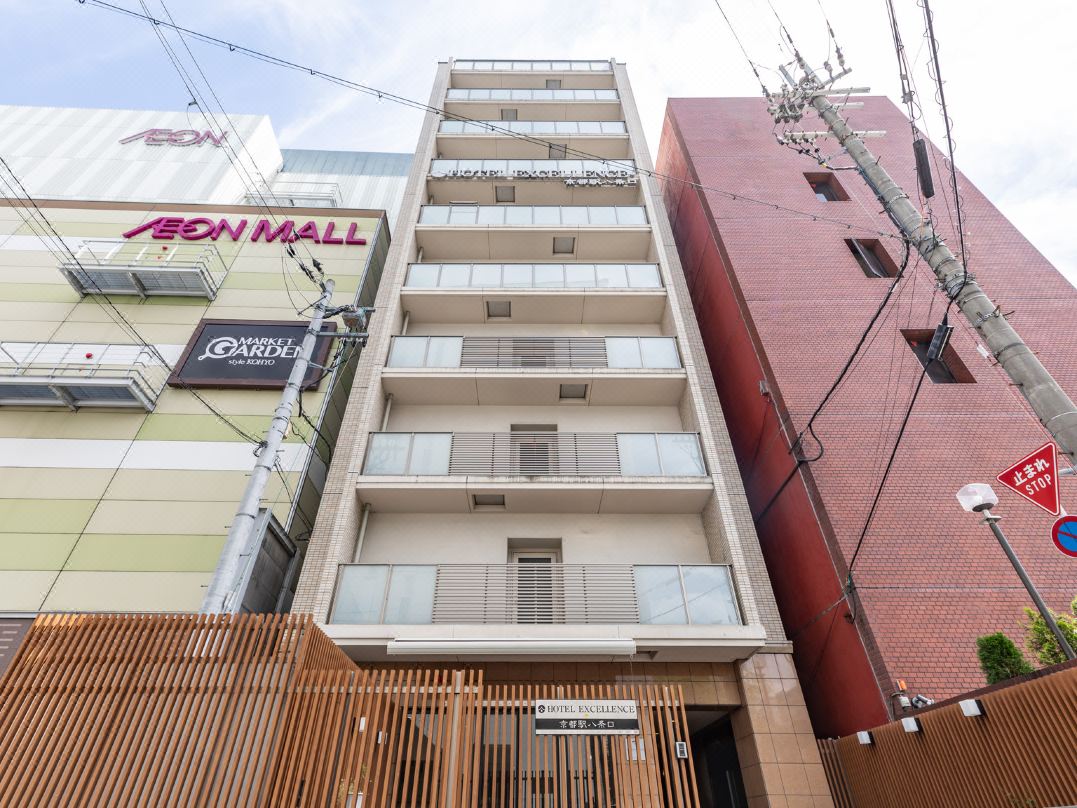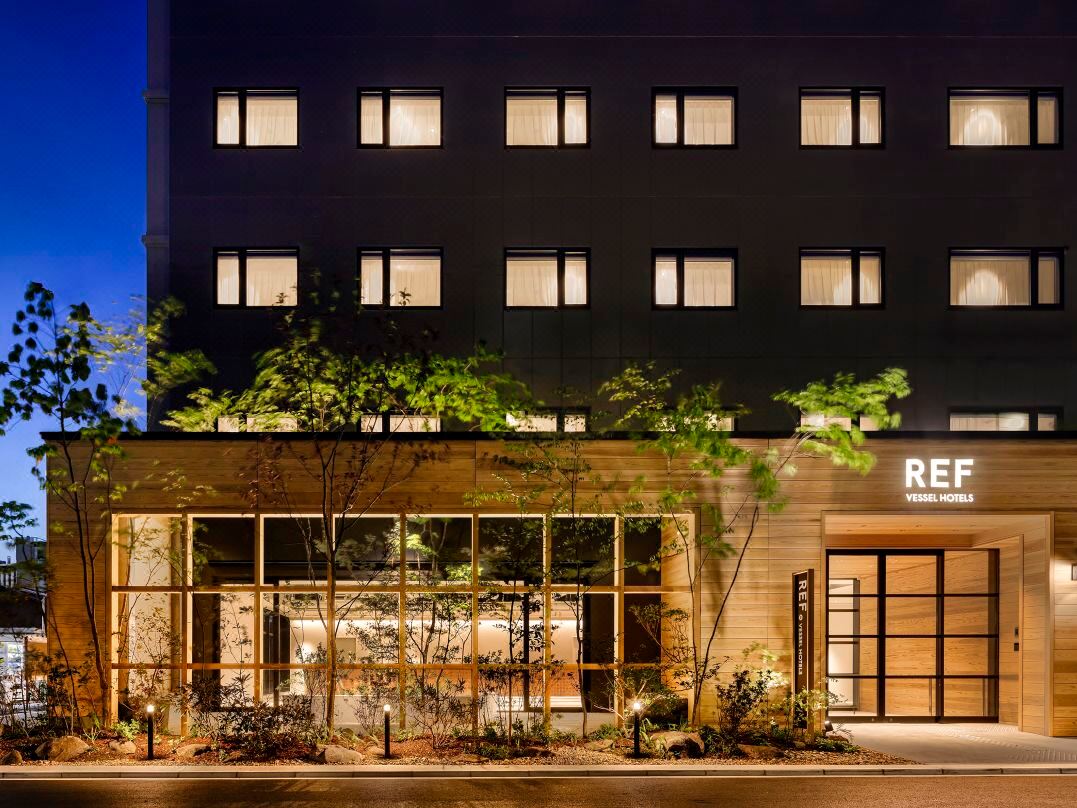Gion: 15 Things to Do in Kyoto's Charming Traditional District

Gion, Kyoto's iconic district, is where tradition harmoniously meets modernity. From watching geisha performances to tea ceremonies and exploring stunning locations like Kenninji Temple and the enchanting Shirakawa Canal, here are 15 must-do activities when visiting Gion.
Nestled within the enchanting streets of Gion, Kyoto's timeless traditional district, is a world where history meets modernity in perfect harmony. Celebrated for its preserved traditional architecture, geisha culture, and unique charm, this historic area offers visitors a glimpse into Kyoto's rich heritage.
Immerse yourself in the allure of this cultural gem with our curated list of 15 things to do in Gion. From the iconic Yasaka Shrine to the serene Shirakawa Canal, every step you take in Gion leads to new discoveries.
Top 15 Things to do in Gion
1. Visit Yasaka Shrine
2. Explore Hanami-koji
3. Meet Geisha and Maiko at the Gion Kagai Art Museum
4. Kimono Tea Ceremony at Kyoto Maikoya
5. Stroll along Shirakawa Canal
6. Visit Kenninji Temple
7. Dine at a Traditional Restaurant
8. Shop for Souvenirs
9. Attend a Maiko Performance
10. Experience a Night Walk
11. Visit Gion Corner
12. Explore Tatsumi Bridge
13. Try Yatsuhashi Confections
14. Visit the Gion Matsuri Festival Gallery
15. Stay at a Ryokan
1. Visit Yasaka Shrine

Photo by Pixta
Immersed in the historic charm of Kyoto's Gion district at the end of Shijo-dori, Yasaka Shrine stands as a timeless symbol of Japan's rich cultural and spiritual heritage.
Originating in the 7th century as Gion Shrine, it has long served to protect the city from disasters and epidemics. The shrine's architecture, inspired by both Shinto and Buddhist traditions and featuring the Romon Gate and main hall, represents a harmonious fusion of these two influences.
Yasaka Shrine's main festival is none other than the famous Gion Matsuri Festival held in July. During the festivities, the shrine bursts to life with vibrant processions and traditional performances, enveloping visitors in a magical ambiance illuminated by lantern light.
Surrounded by traditional machiya houses and immersed in geisha culture, Yasaka Shrine offers a serene retreat into Kyoto's captivating past and present. Its sacred grounds invite exploration, where history, beauty, and spirituality converge to weave a mesmerizing tapestry of the cultural fabric of Kyoto.
Hotels near Yasaka Shrine
↑ Return to the top of article.
2. Explore Hanami-koji

Photo by Pixta
Within Kyoto's Gion district lies Hanami-koji, a picturesque pathway steeped in history and cultural richness. This narrow street, lined with well-preserved machiya houses, acts as a gateway to Kyoto's graceful past and dynamic present.
Hanami-koji exudes an enchanting ambiance, where lantern-lit evenings offer glimpses of geisha and maiko elegantly traversing its cobbled lanes.
The street's appeal transcends visual splendor, encouraging visitors to partake in exclusive teahouses, relishing authentic Kyoto cuisine and the refined nuances of the traditional tea ceremony.
Hanami-koji's architectural heritage, evident in its meticulously maintained wooden facades, conveys stories of artistry and tradition. As night falls, the street metamorphoses into a magical setting, blending ancient rituals with modern delights to orchestrate a symphony of elegance.
↑ Return to the top of article.
3. Meet Geisha and Maiko at the Gion Kagai Art Museum

Photo by Pixta
The Gion Kagai Art Museum is a dedicated venue that celebrates Kyoto's esteemed geisha culture. Conveniently located opposite the renowned Yasaka Shrine, this museum offers a permanent exhibition that showcases the storied heritage of Gion.
Housed within the Gion Kobu Kaburenjo, the museum occupies the primary venue for the illustrious Miyako Odori, an annual extravaganza featuring captivating dance performances by geisha artists dating back to 1872.
Visitors to the museum are provided with a rare opportunity to capture photographs with geisha and maiko, and witness enchanting traditional dance performances by these graceful artists.
Hotels near Gion Kagai Art Museum
↑ Return to the top of article.
4. Kimono Tea Ceremony at Kyoto Maikoya

Photo courtesy of Viator
Experience serenity and tradition with the Kimono Tea Ceremony at the esteemed Kyoto Maikoya in Gion, a cultural treasure officially recognized by the Japanese government.
Immerse yourself in this refined encounter within a Kyoto machiya, where the art of Japanese tea culture unfurls amidst the peace of a Japanese garden, offering respite from the urban bustle.
Situated near the renowned Gion district and the splendor of Kiyomizudera Temple, this venue beckons explorers to immerse themselves in Kyoto's cultural richness, seamlessly blending tradition with access to iconic locales.
↑ Return to the top of article.
5. Stroll along Shirakawa Canal

Photo by Pixta
Flowing gracefully through Kyoto's enchanting Gion district, Shirakawa Canal is a serene waterway that epitomizes the timeless beauty of traditional Japan.
Lined with willow trees and picturesque stone bridges, the canal mirrors the surrounding machiya houses, creating a tranquil and captivating atmosphere. With a rich historical legacy dating back centuries, Shirakawa Canal has been an integral part of Kyoto's cultural and artistic heritage, inspiring artists and poets alike.
During spring, the canal's banks come alive with the delicate pink hues of cherry blossoms, adding a touch of ethereal beauty to its already enchanting setting.
↑ Return to the top of article.
6. Visit Kenninji Temple

Photo by Pixta
Kenninji Temple is an incredible place to immerse yourself in scenic beauty and experience the essence of ancient Japan. Founded over eight centuries ago in 1202 by the visionary monk Eisai, this sacred site embodies a timeless legacy of spiritual enlightenment and cultural elegance.
As one of Kyoto's oldest Zen temples, Kenninji welcomes visitors into a realm of tranquility and contemplation, offering insights into the profound teachings of Zen amidst serene gardens, exquisite artworks, and traditional architectural marvels.
Beyond its spiritual significance, the temple plays a pivotal role in Kyoto's tea culture, with Eisai's legacy blending Zen practice with the art of tea, shaping the city's revered tea traditions.
Hotels near Kenninji Temple
↑ Return to the top of article.
7. Dine at a Traditional Restaurant

Photo Courtesy of Klook
Indulging in a meal at a traditional restaurant in Kyoto and relishing the exquisite flavors of the region's cuisine offer a gateway into Japan's cultural tapestry. Gion presents a cultural banquet like no other, set against the backdrop of the district's captivating historical architecture.
Here, the focus is on authentic Kyoto cuisine, showcasing the intricate delights of Kaiseki cuisine. Kaiseki in Kyoto holds a revered status within the realm of culinary artistry, its origins rooted in the elaborate tea ceremonies of the city.
Celebrated for its emphasis on seasonality and locally sourced ingredients, Kyoto's Kaiseki embodies a profound connection to nature and tradition. Each meticulously crafted dish not only mirrors the changing seasons but also pays homage to the principles of harmony and balance deeply ingrained in Kyoto's cultural heritage.
Read also
↑ Return to the top of article.
8. Shop for Souvenirs

Photo by Pixta
Shopping for souvenirs in Gion, Kyoto's historic district synonymous with traditional charm and geisha culture, offers a delightful immersion into Japan's rich cultural tapestry.
Strolling along Hanami-koji Street, visitors can explore a treasure trove of traditional crafts such as ceramics, textiles, and lacquerware, with each piece reflecting Kyoto's artisanal heritage.
Kimono boutiques and accessory shops that line the narrow lanes of Shirakawa Minami-dori showcase the allure of traditional Japanese attire and ornate obi belts.
↑ Return to the top of article.

Photo by Pixta
Tea enthusiasts visiting Kyoto will discover a diverse selection of high-quality green tea, elegant tea sets, and delicious wagashi sweets at Nishiki Market, ideal for immersing in Kyoto's renowned tea culture.
Elaborate fans with intricate designs, calligraphy sets from Shinkyogoku Shopping Arcade, and maiko-themed trinkets from the shops near Yasaka Shrine beautifully encapsulate the enchanting world of geisha culture.
Antique treasures found in the antique shops lining Kiyomizu-zaka Street offer a peek into Japan's rich history, while the lively stalls of Teramachi and Shinkyogoku Shopping Arcades present a vibrant mix of traditional and modern goods.
Visitors can take home a piece of Gion's timeless charm and history through unique and meaningful souvenirs available in these bustling districts.
Read also
↑ Return to the top of article.
9. Attend a Maiko Performance

Photo by Pixta
Participating in a Maiko performance in Gion offers a captivating journey into the realm of traditional Japanese entertainment and cultural heritage. Engaging in this experience provides a rare opportunity to delve into Kyoto's geisha culture, observing the meticulous artistry and refined grace of these apprentice geisha.
Maiko, distinguished by their vibrant attire and intricate hairstyles, symbolize a dedication to mastering traditional arts and embody a visual representation of Japan's classical beauty. Anticipate a performance filled with traditional dances, music, and interactive elements that offer insight into the world of geisha, establishing an intimate setting for guests to interact with the arts, rituals, and history that characterize this centuries-old tradition.
↑ Return to the top of article.
10. Enjoy a Night Walk in Gion

Photo courtesy of Klook
Strolling through Gion at night offers a transformative experience that whisks visitors into a realm of enchantment and cultural richness. The soft, mysterious glow of lantern-lit streets casts a romantic spell over the historic district. Geisha and maiko, dressed in elegant attire, gracefully traverse the cobblestone paths, infusing the night with traditional allure.
Preserved machiya houses exude old-world charm under the warm radiance of lantern light, painting a scene of timeless elegance. To fully embrace this experience, we recommend joining a guided Night Walk Tour for an enriching exploration!
Led by friendly and knowledgeable hosts, visitors are guided into a world where ancient traditions come alive amidst illuminated lanterns and the sophisticated ambiance of traditional establishments. Wander through the district's traditional backstreets, discovering offbeat temples, shrines, and catching glimpses of geiko or maiko engaged in their evening rituals.
The intimate group setting allows for a close exploration, revealing the historic charm of Hanamikoji Street, the serene beauty of Yasaka Shrine, and the atmospheric essence of Pontocho. This 3-hour small group guided walking tour promises an evening of discovery, offering profound insights into Kyoto's cultural treasures and the mystical allure of Gion under the shroud of night.
Read also
↑ Return to the top of article.
11. Visit Gion Corner

Photo courtesy of Klook
Gion Corner is a facility where visitors can watch geisha performances every evening from 18:00 and 19:00.
This cultural gem presents a comprehensive yet concise experience, showcasing a rich tapestry of art forms. From Kyoto dance by maiko to the comedic charm of kyogen theater, the graceful movements of bugaku, and the serene rituals of the tea ceremony, each performance captures a facet of Japan's cultural heritage.
Through meticulously curated programs, Gion Corner invites guests to explore Japan's cultural essence in a single evocative setting, unveiling the intricate crafts and artistic expressions that define the nation's heritage.
↑ Return to the top of article.
12. Explore Tatsumi Bridge

Photo by Pixta
The Tatsumi Bridge in Gion, Kyoto, stands as a significant landmark within the historic geisha district, symbolizing a gateway to Kyoto's cultural heritage.
Spanning the gentle waters of the Shirakawa River, this bridge boasts a traditional Japanese design with arched supports and wooden planks, harmonizing beautifully with the district's well-preserved machiya houses.

Photo by Pixta
Destined for enchantment, especially in spring when cherry blossoms bloom, the bridge offers an ethereal backdrop of blooming sakura trees, enhancing its allure and radiance.
In other seasons, visitors can enjoy scenic views of the river flanked by willow trees alongside the district's historic structures. The area is renowned for its geisha culture and traditional entertainment, so visitors can enjoy the scenic beauty around this area.
↑ Return to the top of article.
13.Try Yatsuhashi

Photo by Pixta
Yatsuhashi, a beloved traditional Japanese sweet originating from Kyoto, has charmed taste buds across the country with its delicate flavors and cultural significance.
Crafted from glutinous rice flour, sugar, and cinnamon, this confection comes in two main varieties - the soft and filled raw Yatsuhashi (Nama Yatsuhashi) and the crispy baked version (Hodo Yatsuhashi). Its history, dating back to the Edo period, showcases its evolution from a temple offering to a cherished souvenir for Kyoto's visitors.
Available in an array of flavors like matcha and strawberry, Yatsuhashi is often elegantly packaged and enjoyed as a sweet snack or paired with tea, embodying Kyoto's culinary heritage and serving as a symbol of traditional Japanese confectionery craftsmanship celebrated during special occasions and everyday indulgences alike.
In Gion, visitors can indulge in Yatsuhashi at renowned locations such as Kasagiya and Kyoto Kanbai, offering an array of flavors and packaging options.
Yatsuhashi Honpo Kyoto stands as a dedicated store solely focused on this iconic confection, providing a wide selection to satisfy every taste, with plenty of souvenir shops across the district having these delightful sweets packed and ready to bring home as souvenirs!
↑ Return to the top of article.
14. Visit the Gion Matsuri Festival Gallery

Photo by Pixta
If you are not in Kyoto when the Gion Matsuri takes place, fear not. The Gion Matsuri Festival Gallery provides a great insight into the festival, its progression, and artistry. Serving as a visual celebration and documentation of the renowned Gion Matsuri Festival in Kyoto, the exhibition showcases examples of the traditional floats and materials used in the festival. Visitors can enjoy watching animated art of the festival on large partitions and admire photography while learning about the festival in-depth.
The Gion Matsuri is one of Japan's most famous and significant annual festivals held in Kyoto. It takes place throughout the month of July, culminating in the grand procession known as the Yamaboko Junko. This vibrant festival features traditional processions, elaborate floats, cultural performances, and a lively atmosphere that celebrates Kyoto's rich cultural heritage and traditions.
The Gion Matsuri is a symbol of community spirit, artistic expression, and reverence for Japan's history, drawing visitors from around the world to experience its colorful festivities and traditional rituals.
Official website: https://gionmatsuri-g.com/
↑ Return to the top of article.
15. Stay at a Ryokan

Photo Courtesy of Booking.com
Staying at a ryokan in Gion offers a unique window into traditional Japanese culture and hospitality, immersing you in the historical richness of Kyoto's renowned geisha district. These authentic Japanese inns provide an unparalleled experience with tatami mat rooms, futon bedding, and communal baths that epitomize traditional living.
A great example of this is Kyoto Ryokan Kinoe, a beautiful ryokan situated near the famous Yasaka-jinja Shrine and Maruyama Park, beloved for its flourishing cherry blossoms in spring.
The ryokan is steeped in traditional charm from head to toe, with tatami floors paving the way and fluffy futons for a comfortable sleep alongside shoji doors. Visitors can enjoy relaxation in a large, warm onsen available 24 hours, as well as admire the accommodation's beautiful traditional Japanese stone garden.
Adding a touch of authenticity and tradition, the ryokan offers the opportunity to reserve outstanding entertainment performed by geisha or maiko! Relax and unwind to the sounds of music and dance as these artists elegantly showcase Kyoto's timeless performances. To cap off the stay, visitors can indulge in Kaiseki, a delicious array of dishes originating from the region featuring seasonal specialties.
↑ Return to the top of article.
FAQ
Why is Gion famous?
Gion is famous for being one of the most well-known geisha districts in Japan, particularly in Kyoto. This historic district is renowned for its preserved traditional architecture, quaint tea houses, exclusive restaurants, and its association with Geisha culture. Geiko (the local term for Geisha in Kyoto) and Maiko (apprentice Geiko) can often be seen in their elaborate attire moving gracefully through the narrow streets of Gion, adding to its allure and mystique. The district's rich cultural heritage, including its historic temples, traditional ceremonies, and the picturesque Shirakawa Canal, contribute to Gion's fame as a symbol of Japan's traditional arts and customs.
Is it worth visiting Gion?
Yes, Gion is definitely worth visiting for its unique blend of history, culture, and charm. As a prominent geisha district in Kyoto, Gion offers visitors the opportunity to experience traditional Japanese customs, architecture, and performances. The district's picturesque streets, lined with historic machiya houses, tea houses, and temples, provide a captivating glimpse into Japan's rich heritage. Whether you're interested in exploring the Geisha culture, savoring authentic cuisine, or simply immersing yourself in the ambiance of a bygone era, Gion stands out as a must-visit destination for those seeking an authentic and enriching experience in Kyoto.
What is the most famous street in Gion?
One of the most famous streets in Gion is Hanami-koji. Hanami-koji is a charming, well-preserved narrow street lined with traditional wooden machiya houses, stylish restaurants, and exclusive teahouses. This iconic street in Gion is particularly known for its historic ambiance and is a popular spot for visitors looking to soak in the traditional atmosphere of Kyoto's geisha district.
Where are geisha girls?
Geisha can be found in districts like Gion in Kyoto, Japan, which are known for their traditional performances and entertainment. Geisha, known as Geiko in Kyoto, and Maiko, apprentice Geiko, can often be seen in these districts as they move between engagements at tea houses, restaurants, and cultural events. While they can be spotted in these areas, it's important to respect their privacy and adhere to the cultural etiquette when observing or interacting with them.
Where to see geishas in Gion?
In Gion, Kyoto, visitors can catch sight of the iconic Geisha (Geiko) and Maiko in traditional settings like Hanami-koji, a historic street renowned for its Geisha presence. Adjacent areas such as Pontocho and Miyagawa-cho also offer opportunities to glimpse these traditional performers as they move between tea houses and engagements. Evening visits to traditional establishments in these districts may increase the chances of encountering Geisha and Maiko, adding a touch of timeless elegance and cultural richness to the immersive experience of exploring Gion's historic streets.
What time to go to Gion?
The ideal time to visit Gion in Kyoto varies based on individual preferences and interests. Daytime allows for a quieter exploration of the district's temples and canals, while evenings present opportunities to witness Geisha and Maiko moving between engagements, adding to the traditional ambiance under evening lights. Timing your visit to coincide with special events like the Gion Matsuri Festival or scheduled Maiko and Geiko performances in tea houses can offer a more immersive experience of Gion's cultural richness and historical charm. Whether exploring the serene streets during the day or immersing oneself in the mystique of the evening, Gion offers diverse experiences throughout the day that cater to different preferences and interests.
Is Kyoto safe to walk at night?
Generally, Kyoto is considered a safe city for walking at night compared to many other urban areas. The city is known for its low crime rates and a generally peaceful atmosphere. However, like in any city, it's important to exercise caution and be aware of your surroundings, especially in less populated or dimly lit areas.
Popular tourist areas like Gion and Pontocho are usually safe at night due to the presence of visitors and establishments that cater to tourists. It's advisable to stick to well-lit streets, avoid isolated areas, and take standard safety precautions to ensure a pleasant and secure nighttime experience in Kyoto.
Enjoy Exploring Gion
In essence, Gion in Kyoto is a must-visit destination for its unparalleled representation of Japan's cultural heritage. The district's fusion of history, art, and tradition creates an immersive experience that transports visitors to another era.
From witnessing the grace of geisha and maiko to exploring ancient temples and savoring authentic cuisine, Gion offers a captivating journey through Kyoto's rich past.
Read also
Main image by Pixta
Assistant editor at MATCHA since 2023, Kate is a photographer who enjoys traveling Japan's hidden gems and adventuring off the beaten path. Living in Japan since 2018, she has traveled across different areas of Japan. From indulging in Aomori’s apple pies and fiery festivals to exploring the quaint charm of Nagasaki’s cat-filled streets she is always searching for new areas full of atmospheric beauty, festivals, and seasonal events to capture on camera.






























































![[Coupon Available] Attention Overseas Winter Sports Fans! Nagano's Sports Depot Has Evolved](https://resources.matcha-jp.com/resize/720x2000/2026/01/05-254819.webp)
![[2 hours from Tokyo ] 10 Quiet and Breathtaking Views of Mount Fuji in Yamanashi Hokuto City , Yamanashi - Part 2](https://resources.matcha-jp.com/resize/720x2000/2025/12/16-253037.webp)
